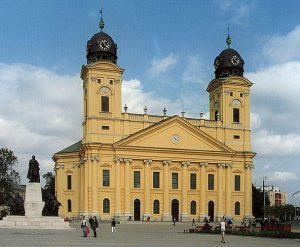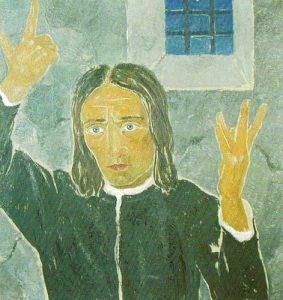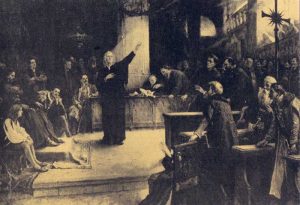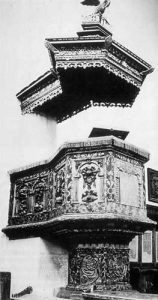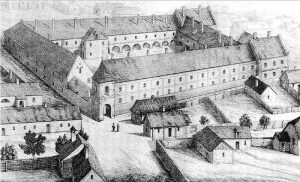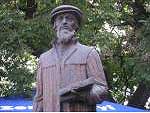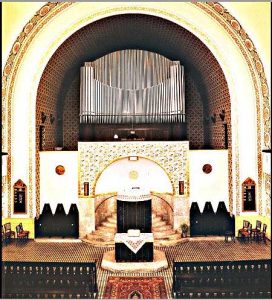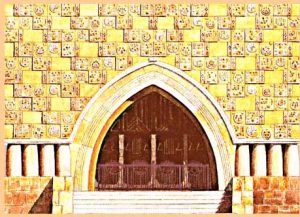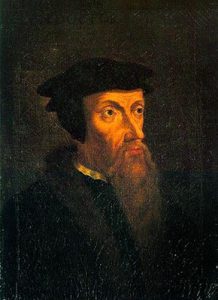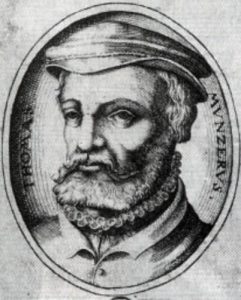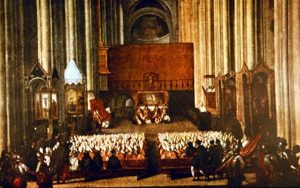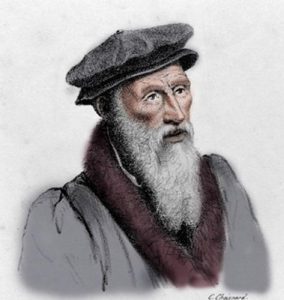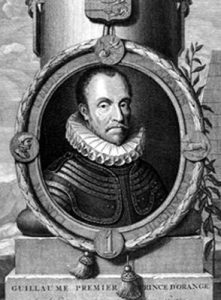The political situation in the XVIth century
In 1526, the Turkish victory over the Hungarian army in Mohacs led to a general upheaval in the country, which was soon divided into three parts. The west was dominated by the Habsbourgs, the central part came under Turkish control and Transylvania paid tribute to the sultan but remained fairly independent.
At that time Hungary was a much bigger country than now, since it lost much of its territory after the First World War.
The Reform movement in Hungary
Luther’s ideas came to Hungary as early as 1520 and mainly influenced the Germans in the north of Hungary (which is now Slovakia) and the urban population.
The Reform movement spread through the country in the second half of the XVIth century. Mihaly Sztarai and Istvan Szegedi Kiss (1506-1572) were two talented preachers, as well as the bishop of Debrecan, Pierre Meliusz, who wrote the first Hungarian confession of faith (1559). In 1567, the first synod was held in Debrecan, which adopted the Second Helvetic Confession (Confession helvétique postérieure) (1566), drawn up by Bullinger. The town of Debrecan played an important role in the development of reformed Churches in Hungary and came to be known as the “Hungarian Geneva” or “Calvinist Rome”.
The reformed Churches were grouped together by province, under the supervision of a superintendent or a bishop. However, because of the political situation, it was not possible to have a national assembly or a united Church.
Transylvania
The principality of Transylvania, (now situated in Romania) managed to stay relatively independent by maintaining a certain political balance between Istanbul and Vienna. It became the home of Hungarian culture and a stronghold of Calvinism.
Calvinism had a rival denomination in the form of the unitarian movement, which developed from 1560 onwards, under the influence of the dynamic former lutheran bishop David Ferencz (1520-1579). This movement denied the doctrine of the Trinity as being anti-Biblical and spread to Cluj, Prince Sigismund (1540-1571) was one of its converts. He issued
an edict of religious tolerance, the first in Europe, in 1568, the Edict of Torda (Diete de Torda). Four denominations were recognized : catholicism, lutheranism, the reformed and unitarian movements. In spite of a difficult past, the Unitarian Church still exists in Transylvania amongst the Hungarian population, with a membership of 70.000.
Calvinism survived in Hungary because of the rebellion of Istvan Bocksai against the rule of Vienna. Transylvania had submitted to this empire during the war against the Turks (1591-1606). He led an army of peasants to victory and regained sovereignty and religious freedom for his country. He was himself a pious calvinist and saved calvinism both in Transylvania and in Hungary. His statue can be seen in front of the wall of Geneva, with a sabre in his hand. Nearby are the words he was supposed to have said, “The independence of our faith, religious freedom and our traditional laws are more important to us than gold itself.”
There was a renewal of calvinism in the XVIIth century
The English puritans inspired a new wave of reforms in Hungary which led to a revival of calvinism. They advocated the practice of religion in daily life and piety. They reached out effectively to the people because they expressed their faith in clear terms which everybody could understand. Hungarian calvinism was built on a solid basis and still survives today.
At the beginning of the XVIIth century the Hungarian Churches decided to take on a presbyterian form of ecclesiastical organization : they were governed by lay presidents who worked together with pastors. It is because of these laymen that the Churches were able to survive when the pastors were persecuted by the authorities.
The Counter-Reform Movement in the XVIIth and XVIIIth centuries
The Counter-Reform movement was late in coming to Hungary. It was only after the treaty of Wetphalia (1648) that the emperor Ferdinand III (1637-1651) was able to impose his authority on Hungary and force its inhabitants to become catholic. He appointed highly motivated bishops, the Jesuits welded a great deal of influence on the population and may noblemen converted to Catholicism. From 1671 to 1681, the Counter-Reform movement was at its height. Pastors and teachers were exiled, sentenced to go to work camps or row in slave ships. The protestant Churches were given to catholics and the reformed Church, although it had previously been the main denomination in the XVIIth century, suddenly lost many of its members.
However, the imperial troops became so renowned for their brutality that Transylvania, the French and even the Turks supported a rebellion against them. In 1681, at the Diet of Sopron, the emperor Leopold 1st had to accept a compromise and gave a certain amount of religious freedom to the protestants. In 1699, the Turks were finally driven out of Hungary,
leaving the country to the control of the Habsbourgs. They ceased to apply a policy of centralization and imposing Catholicism as the only religion in the country after the rebellion of Ferenc II Rakocz and the treaty of Szatmar in 1711. However, life remained difficult for the protestants.
The edict of tolerance and the constitution of a national Church
The edict of tolerance in 1781 brought to an end a century of oppression against Protestantism. Although Catholicism remained the major religion, protected by the emperor, protestant parishes were allowed on the basis of at least a hundred protestant families. New churches were built but belfries were forbidden.
The protestants took part in the rebellion of 1848 against the Habsbourgs but independence, and the resulting equality between catholics and protestants only lasted a year. When the Habsbourgs regained power, there were reprisals against the protestants for having participated in the rebellion.
It was only in 1881, at the synod of Debrecen that a national Hungarian Church came into existence. From this time onwards, synods were held every ten years and work continued towards the unification of the Hungarian Reformed Church.
At the end of the XIXth century, liberal theology and the Revival movement made a certain headway in Hungary.
The XXth century : the treaty of Trianon (1920) and communism
Before 1910, there were 2,620,000 members of the Hungarian reformed Church divided into five ecclesiastical provinces. At the treaty of Trianon, Hungary became independent but lost two thirds of its territory : the whole of Transylvania, which became Romanian, the higher part of Hungary, which became part of Slovakia and the southern province, which is now part of Serbia. Due to this division of the country, the Hungarian reformed Church lost half its members. In spite of a doctrinal renewal, it was in a fragile position when confronted with the growing influence of Nazism and later communism in the country. The communist party oppressed the Churches. It nationalized all religious teaching ; out of all the many reformed schools and universities the only ones to survive were the theology faculty of Budapest, Debrecen and the college of Debrecen. Religious instruction in schools was at first optional and then forbidden. Pastors were closely supervised. Some of them collaborated with the party. After the revolution of 1956 the Churches were not as oppressed as before, but atheism gradually developed.
Protestant Churches today
It was only in 1990 that Hungary regained religious freedom. A certain number of schools were given back to the Churches (the reformed Church received 40 nursery schools, 33 primary schools, 20 secondary schools). Pastors and teachers of religion are trained in four theology faculties : Budapest, Debrecen, Papa, Sarospatak
The Hungarian reformed Church (20% of the population) now comes after the catholic Church (60% and before the Lutheran Church (5%). It has two million members in Hungary but in addition three and a half million members throughout the world in what used to be Hungarian provinces and in the West, due to the mass emigration which took place after the rebellion of 1956.
The Lutheran Church has about 300 parishes. There are also some Baptist and Methodist Churches.
Website of the Reformed Church in Hungary (Magyarországi Református Egyház)

